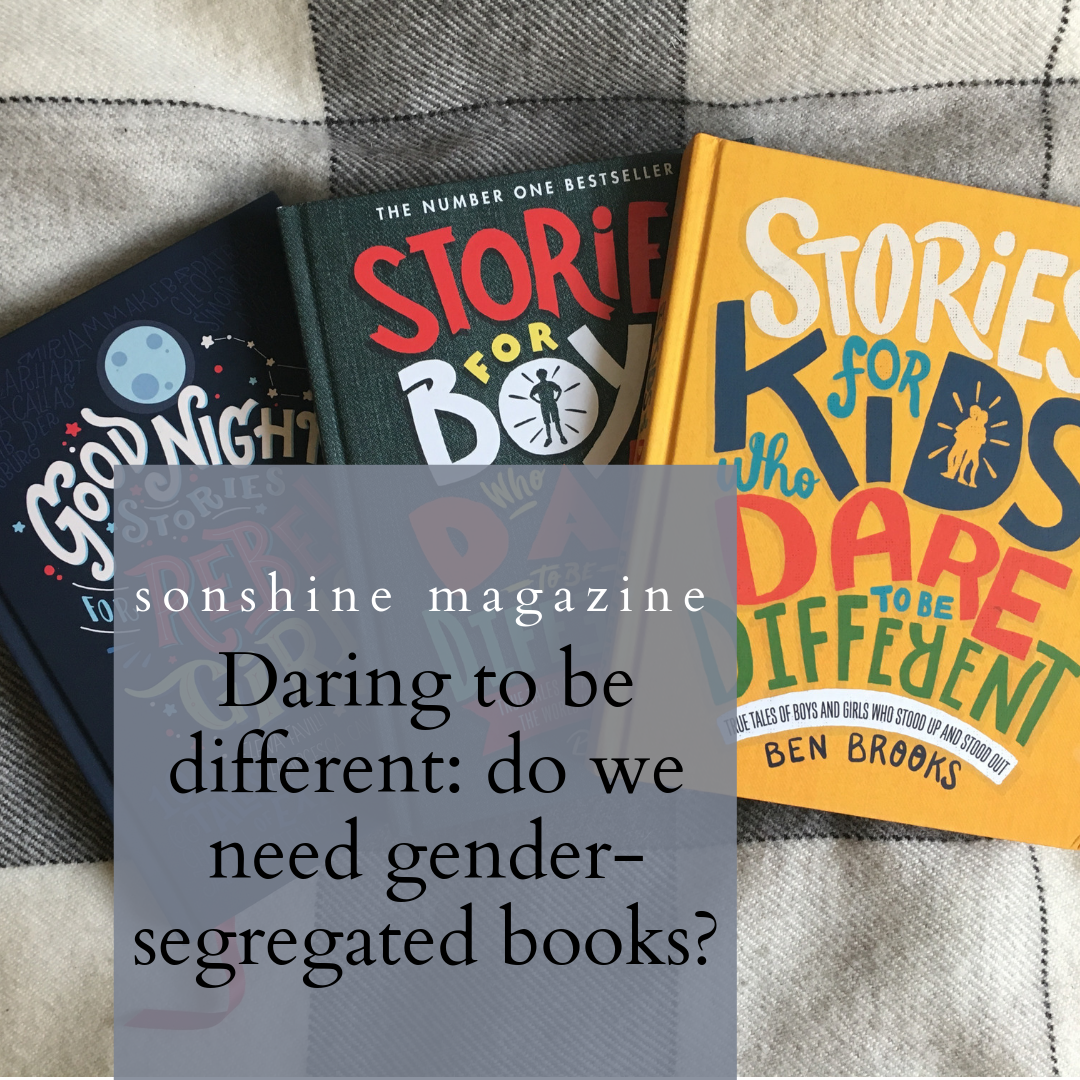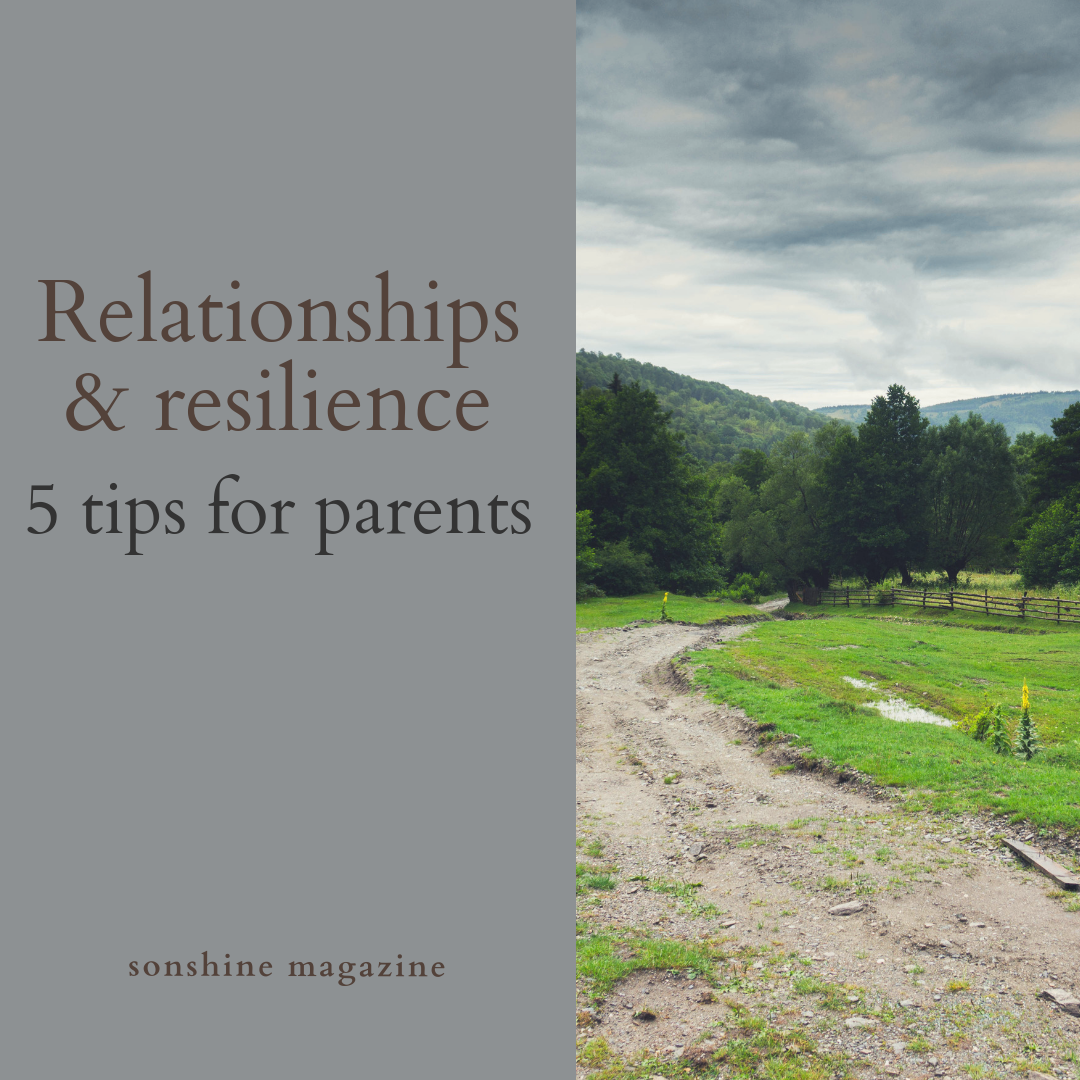Daring to be Different, Together?
Rebecca Fortey considers the trend for gender-segregated books and reviews two best-sellers for boys.
As this issue of Sonshine highlights, there is a tendency among some otherwise progressively-inclined people to put boys-lib at the bottom of the to-do list, or even dismiss the idea entirely due to man’s historic head-start. It’s easy to sympathise with this position, but the truth is many boys still do need a little liberating from a classic role-model spectrum that runs from Harry Kane (I kick good!) to Lewis Hamilton (I go fast!) to Spiderman (I kick good! I go fast! I climb walls!). I’m not saying Kane and Hamilton and Spidey don’t have their complexities – we know they do – it’s just that much of boys’ bonding banter in the playground from when they’re quite little revolves around a narrow set of exemplars. My son is foremost among five-year-old Premiership bores; partly for my own sake, I want him to be able to talk about other things, too.
Some initiatives aiming to explore broader definitions of what men might be seem to have foundered or been met with significant resistance: the kinder notion of man at his best advocated in the controversial Gillette ad was met by a scarily vitriolic backlash, and while the Southbank Centre-originated WOW (Women of the World) festival expands across the world year on year, its companion BAM (Being a Man) festival has seemingly evaporated. Given that they were no doubt hoping to replicate the massive success of the 2016 Goodnight Stories for Rebel Girls, this might have seemed an inauspicious sign for the Publishers of Stories for Boys who Dare to be Different, described as ‘an inspiring collection of 100 stories of famous and not-so-famous men from the past to the present day, who went on to make the world a better place through compassion, generosity and self-belief’. Any such fears would have been unfounded: Quercus has sold 50,000 copies in the UK alone so far, indicating an appetite for fresh stories about men.
Maybe they would have sold even more if they’d made a small tweak to the title: making these stories about rather than for boys would have recognised the fact that people of any gender could do with a bracing dose of stories about kind, sensitive or free-thinking men. This segregated slant is baffling, coming from authors who clearly prize inclusivity. As future colleagues, co-activists, partners and parents, girls would be able to see from the examples in these pages that there is nothing innate about the connection between maleness and emotionally-illiterate, blinkered aggression; they could see how they deserve to expect more, actively encouraging this more-three dimensional version of man out into the open. In this respect, it’s good to see that Ben Brooks and Quinton Winter have produced a follow-up – Stories for Kids who Dare to be Different – in which 17th-century West African Queens rub shoulders with 21st-century male figure skaters. Here we can begin to envisage a world in which divisions appear to fade away.
You can see why these books have been a hit. Strikingly presented, one spread per brilliant person, and illustrated in a bold graphic-novel style, they look so much more coherent, covetable, curl-uppable-with, than the photographic non-fiction books on great scientists or sportspeople that line the library shelves. The stories themselves are simply told and take in an enormous diversity of nationalities, ages and ‘occupations’. Environmentalists, fashion designers, film directors, artists, lawyers, chemists, circus performers, engineers, activists, medieval saints, Eurovision-song-contest-winners, all are here. And importantly, many are shown as vulnerable. There are some familiar figures, particularly among the men (Ghandi and Obama, beloved though they are, aren’t really lacking in exposure) but there are plenty of revelations, too – I hope some bit of the story of Indonesian Adeline Tiffanie Suwana, who planted mangrove saplings to defend her homeland from flooding, stays with my son as he grows up. Similarly inspiring is the story of Mohamed Taher, who, on discovering that 99.3% of Egyptian women felt harassed when they went out in public, organised and took photographs of female dancers reclaiming the streets – though I couldn’t fully explain that one to my son: he doesn’t yet know what sexual harassment is.
Which brings me to an important point: the online age guideline for the books (9 to 18 years old) should be taken seriously, despite the friendly cover. Otherwise you might find yourself trying to explain to a small child tucked up sweetly for the night about death camps, gang violence, boy soldiers, suicide, torture, state repression… The density of the injustices that the protagonists fight against does convey a pretty bleak vision of humankind. A bit of spontaneous editing was needed when reading this book to my son, and even then, he asked, ‘How many “dies” are there in total’? A few more stories in which ordinary people from slightly stuffy but generally genial backgrounds achieve something extraordinary might have balanced things out a bit.
Beyond the body count, what did my son think of these books? I’ll be honest: given the option to choose using the pictures as a guide, at first he searched out sporty-looking boys; next, sporty-looking women, then cool-looking boys, cool-looking girls, and so on. Bookish ladies weren’t getting a look-in until I intervened. But he listened well to everything, asked good questions, and despite the profound and dramatic nature of these stories, after 5 or 6 tales he drifted off to sleep. Whether his dreams are populated by Liverpool strikers or civil rights activists, I am yet to find out.
Stories for Boys who Dare to be Different (Quercus Books, rrp £17)
Stories for Kids who Dare to be Different (Quercus Books, rrp £20)
By Ben Brooks; illustrated by Quinton Winter
Rebecca Fortey is Publisher for the Hayward Gallery and writes on books and culture.











